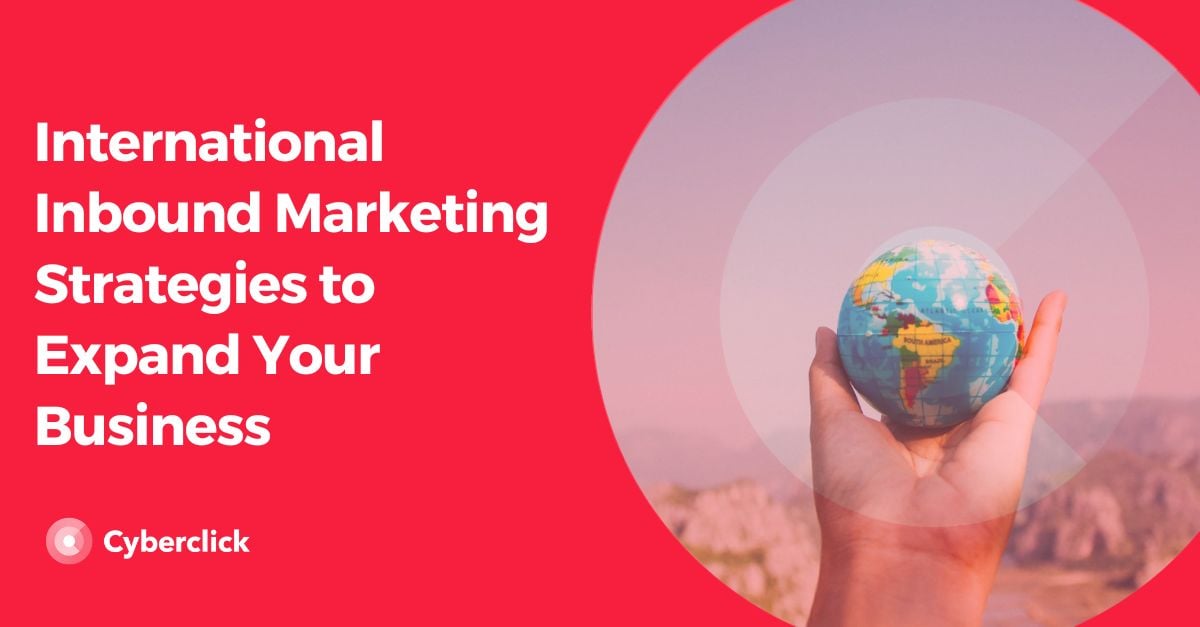International inbound marketing is a methodology that involves attracting foreign users to purchase your products and services by generating valuable content tailored to their needs, tastes, and preferences.
The purpose of this content is to introduce your brand, build trust, and ultimately convert users into customers.
International inbound marketing is similar to standard inbound marketing, but with the added complexity of adapting to each market it targets. Content strategies in international inbound marketing can differ as potential customers in another country may have different needs and preferences compared to those in your home market.

Benefits of International Inbound Marketing
The benefits of international inbound marketing are numerous. Primarily, it enables you to reach potential customers organically. In today's world, where consumers are increasingly fatigued by aggressive and overwhelming sales tactics, organic engagement is crucial. While traditional marketing methods persist, inbound marketing strategies have become dominant in the current landscape.
Additionally, international inbound marketing allows you to gain prestige, authority, and become a reference in your industry—valuable assets in today's highly competitive market. The strategy places the customer at the center, providing them with information to make informed decisions.
International inbound marketing involves adapting national inbound strategies to the global stage in order to ensure success. By gaining insights into the preferences and needs of each audience, you can tailor your content in order to increase conversions.
What to Consider Before Implementing International Inbound Marketing
- Local Expertise in Marketing Teams: It is advisable to have professionals from the target region as part of your marketing team. Creating a dedicated marketing team for the specific territory that will work with the national team ensures alignment. Language and culture are crucial aspects that native professionals understand, influencing the success of marketing strategies.
- Avoid Automated Translation Tools: Steer clear of using translation tools to convert content from the original language to the language of the target region. Even with subsequent review by a native professional, content that resonates in one location may not do so in another. Using such tools risks the failure of the strategy, especially concerning keywords and SEO, which vary across regions.
- Maintain Brand Consistency: While adapting content for international audiences, it's essential to maintain consistent style and values, and not lose the original brand image. Consistency is crucial to avoid confusion among potential customers and to retain brand awareness across borders.
Creating an International Inbound Marketing Strategy
The first thing to do is to choose which country or countries you want to start selling your products or services to. If you want to go global, but do not know which countries to sell to, we recommend that you carry out market research to detect where you will have more opportunities. In this research you should take into account not only economic, cultural and language factors, but also legal, financial and logistical factors.
If you have already chosen the countries, it's time to move on to the next step. Follow the 4 steps below that make up a typical inbound strategy. Keep in mind that this is a long-term strategy, so don't stress if you don't see results right away, as it takes time and requires patience.
Attraction
In this first phase your team should focus on getting traffic and gaining visibility through the generation of valuable content using SEO, social media, and blogging.
Conversion
Once you have gotten enough traffic, you want potential customers to sign up to get information and build a database. This is where email marketing through newsletters comes into play. You'll also want to use other resources such as landing pages or forms.
Sales
In the third phase, it's time to close conversions with leads that have registered. But remember, in an inbound strategy the goal is not to be aggressive. You must always provide value and offer the potential customer what they need or are interested in. In this sense, email marketing works very well, but the messages will be more sales-oriented.
Loyalty
Once you have managed to convert the customer, the work of the inbound strategy is not over, because you also want to focus on retention. Don't forget that getting a customer to buy again is much more economical than getting a new customer.
In order to get a repeat customer, an inbound strategy seeks to ensure that the customer gains confidence in the brand and does not investigate competitor brands. To do this, the customer is offered more specific (less generic) content, as well as discounts or exclusive gifts.
Real Examples of International Inbound Marketing
Yves Rocher
The French cosmetics and perfume company operates in over 88 countries with over 3,000 stores, many of which are franchised. Despite their international presence, Yves Rocher maintains consistent web design and structure across its websites. The brand's essence—commitment to the environment and the use of natural ingredients—is conveyed globally. This exemplifies the importance of adaptation to each country while preserving the brand's core identity.
Zara
Contrasting with Yves Rocher, the Spanish fashion brand Zara opts for a unified approach. Zara uses a single official Instagram account in English, irrespective of the country. This strategy demonstrates the brand's efforts to create a message adaptable to all territories on social media. However, for other content types such as blogs or newsletters, adaptation to the language of each country is recommended.
By understanding and implementing these strategies, businesses can effectively utilize international inbound marketing to tailor their approach to diverse markets, fostering global growth.
Digital Marketing Strategist en Cyberclick. Licenciada en Publicidad y Relaciones Públicas (URV), con un postgrado en Marketing y Comunicación Online (UAB). Especializada en Google Ads, Social Ads y analítica web.
Digital Marketing Strategist at Cyberclick. Degree in Advertising and Public Relations (URV), with a postgraduate degree in Marketing and Online Communication (UAB). Specialized in Google Ads, Social Ads and web analytics.






Leave your comment and join the conversation